Tokyo Day Trips: 10 Spots to Explore Just 1 to 2 Hours Away from Tokyo!

Tokyo is dotted with fascinating sightseeing spots, from traditional temples to modern pop culture. Most of the major sightseeing areas such as Asakusa, Shinjuku, Ginza, and Akihabara are well-covered in every guidebook, but Japan’s charms are just as plentiful outside the city center. With a train ride of about one or two hours, you’ll find yourself in an entirely different Japan, far away from the hustle and bustle, and emerged in local, traditional culture!
We’ve selected our 10 favorite Tokyo day trip destinations that offer lush natural scenery, rich history, and an authentic taste of Japan. Hop on the train!
1. Kamakura (Kanagawa): Walk Through Japan’s Ancient History
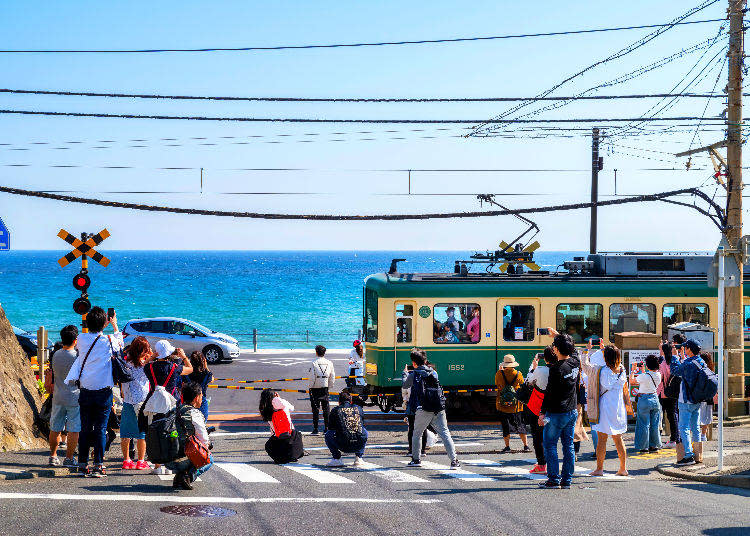
Enoden aka Enoshima Electric Railway (picture cells / Shutterstock.com)

The Great Buddha of Kamakura at Kotoku-in Temple (khuntapol / Shutterstock.com)
Access from Tokyo: Shinjuku Station to Kamakura Station (JR Shōnan-Shinjuku Line)
Duration: ~1 hour
Fare: 1,836 yen
Must-see spots: Tsurugaoka Hachimangu, Hasedera Temple, Hokokuji (the bamboo forest temple), Kōtoku-in, and the Great Buddha of Kamakura, “Enoden” train
Notes: Central Kamakura is not that spacious and can be easily explored on foot, but it takes about 25 minutes with the Enoden (Enoshima Electric Railway) Line to go to Enoshima. If you want to visit both Kamakura and Enoshima, it is recommended to account for that time and arrive early.
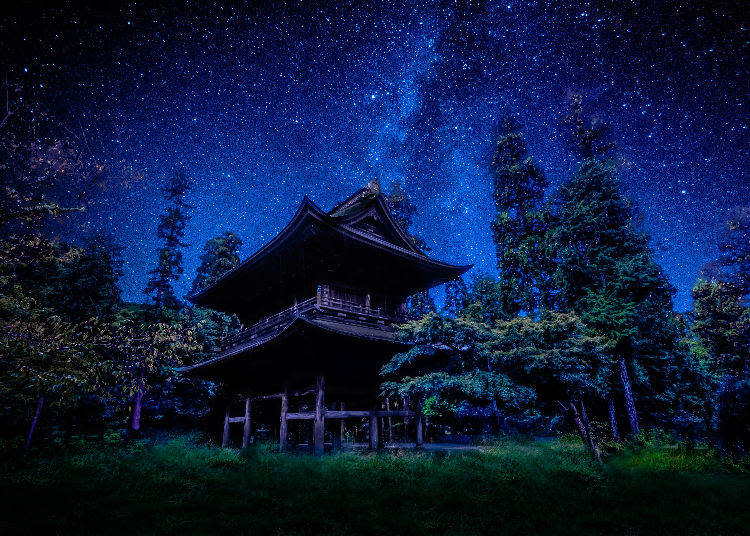
Kenchoji Temple (Saran Jantraurai / Shutterstock.com)
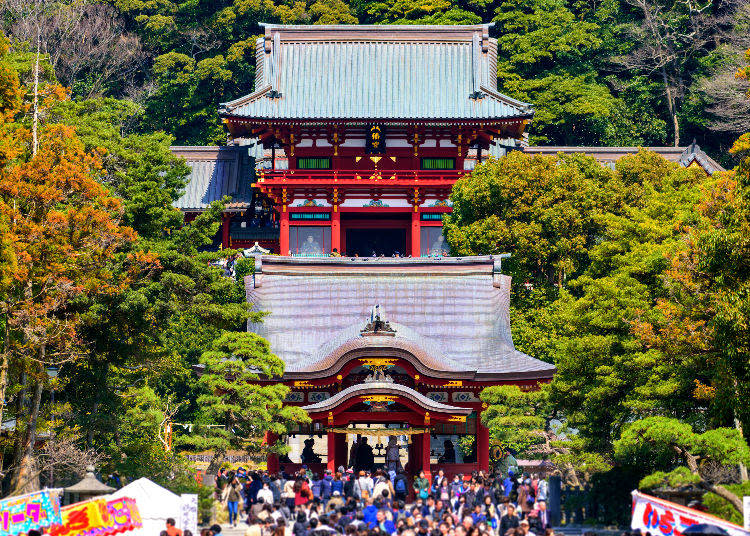
Tsuruoka Hachimangu
Merely an hour away from Tokyo, Kamakura is an incredibly popular day trip destination for both tourists and locals. It is the ancient capital of Japan, boasting a kaleidoscope of over 100 shrines and temples. That includes the stunning Tsurugaoka Hachimangu, Kenchoji Temple, and Hasedera Temple, with especially the latter being famous as “the temple of flowers” as every season sees other flowers in bloom on the premises. Of course, particularly famous is the Great Buddha, a massive bronze statue towering 11.3 meters high above visitors. The retro “Enoden” train takes you on a scenic tour through the area and to beautiful Enoshima. Kamakura is sure to become one of your favorite travel memories.
Exploring Kamakura’s Ancient Wonders at Hase-dera Temple and the Great Buddha
Touring Around Kamakura - Savor Local Delights in Kamakura’s Traditionally Japanese Townscape!
2. Nikko (Tochigi): A Mystical Spot Nestled Deep in Nature
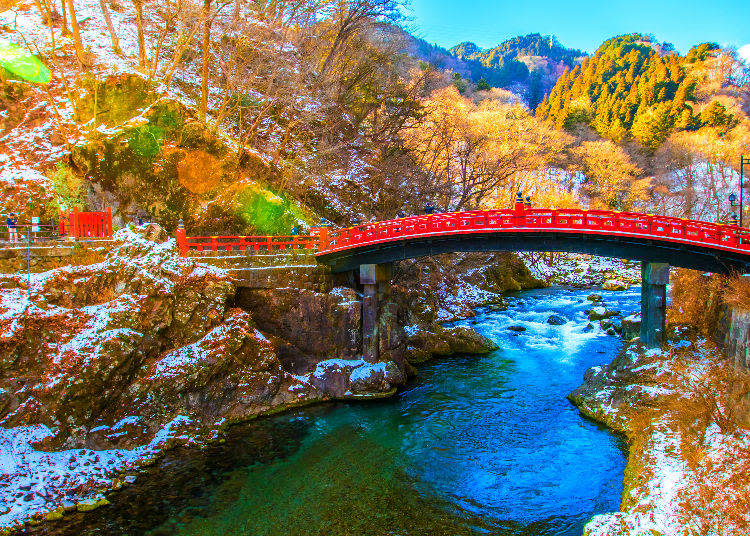
Shinkyo Bridge, Nikko
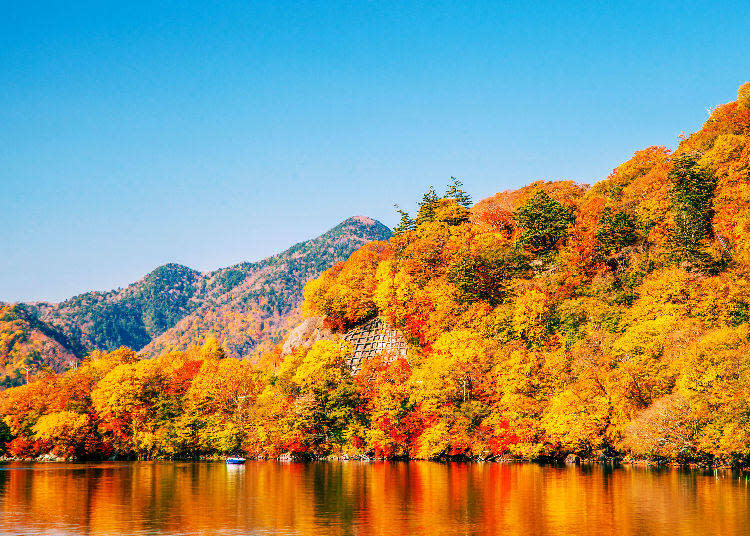
Chuzenji lake, Nikko
Access from Tokyo: Tobu Asakusa Station to Tobu Nikko Station (Limited Express Spacia)
Duration: ~1 hour 50 minutes
Fare: 5,400 yen
Must-see spots: Nikko Tosho-gu, Kegon Falls, Shinkyo Bridge
Notes: It depends on season and area, but generally speaking, Nikko tends to be around 3-7 degrees cooler than Tokyo. Even in summer, it’s a good idea to bring a light jacket for cool mornings and evenings. Winter is particularly cold with temperatures below freezing, so dress appropriately.

Nikko Toshogu Temple

Nikko is both rich in nature and historical, mystical spots. About a 2-hour train ride away from Tokyo, it is home to numerous national treasures and important cultural assets on the grounds of the majestic Nikko Tosho-gu Shrine in the middle of the mountains. The temple itself is a World Heritage Site and indeed an amazing sight to look at, adorned with stunning woodcarvings by ancient masters. At natural landmarks such as the Kegon Falls, you’ll experience nature in its most enigmatic form with clear water falling from a height of 97 meters. Another such spot is Shinkyo Bridge and its vermilion color, honored as a sacred spot since centuries.
Beautiful Nikko! Must-See Spots to Discover Japan’s Nature, History, and Culture
5 Reasons to Visit Nikko: Japan's Mystical City, Rich in Nature
3. Mount Fuji (Shizuoka, Yamanashi): The Symbol of Japan

Access from Tokyo: Shinjuku Station to Otsuki Station (JR Limited Express “Azusa”), Otsuki Station to Fujisan Station (Fuji Kyuko)
Duration: ~2 hours 25 minutes
Fare: 6,534 yen
Access from Tokyo (Bus): Shinjuku Expressway Bus Terminal to Kawaguchiko (or Fuji Subaru Line 5th Station)
Duration: ~1 hour 30 minutes (~2 hours 30 minutes)
Fare: 1,420 yen (3,100 yen)
Must-see spots: Fuji Five Lakes (Yamanakako, Kawaguchiko, Motosuko, Saiko, Shojiko)
Notes: People usually spend the night at a mountain hut when climbing Mount Fuji. Some do the climb in a single day starting at dawn, but we do not recommend this due to possible altitude sickness or other issues. If you plan on climbing Mount Fuji, do so with sufficient preparation.


At the top of Mount Fuji
Mount Fuji is Japan’s highest mountain, at 3,367 meters above sea level. It has played a major role for all aspects of Japan’s culture since ancient times, fascinating onlookers with its magnificent beauty. In 2013, the mountain became an official World Cultural Heritage Site and undoubtedly is a must-see for everyone coming to Japan. Mount Fuji is surrounded by five distinct lakes, created long ago when the volcano erupted, and this landscape is called “Fuji Five Lakes.” People have given nicknames to the various phenomena created by nature, such as “Inverted Fuji” when it is mirrored on a calm lake, or “Diamond Fuji” when the sun is right above the summit.
Getting to Mt. Fuji: Complete Access Guide - With Trail Tips & More!
When to See Mt. Fuji? The Best Time and Season When Japan’s Iconic Mountain is Visible!
Even Japanese People Don’t Know That?! 11 Secrets About Mt. Fuji, the Symbol of Japan
4. Hakone (Kanagawa): Volcanoes and Hot Springs

Jheng Yao / Shutterstock.com

Access from Tokyo: Tokyo Station to Odawara Station (JR Shinkansen “Kodama”), Odawara Station to Hakone Yumoto Station (Hakone Tozan Railway)
Duration: ~1 hour 15 minutes
Fare: 7,060 yen
Access from Tokyo (Alternative): Shinjuku Station to Hakone Yumoto Station (Odawara Romancecar “Hakone”)
Duration: ~1 hour 45 minutes
Fare: 4,548 yen
Must-see spots: Hot springs, Lake Ashi, Hakone Ropeway, Hakone Tozan Line
Notes: Day-trip hot spring facilities are usually not open all day and reservations are necessary for outdoor hot springs. Make sure to confirm business hours and other details in advance.

Night view of Hakone city (bundit jonwises / Shutterstock.com)
Hakone is surrounded by the Hakone Mountain Range that includes famous spots such as Kamiyama and Mount Kisokoma. The area is rich in nature and the four seasons are beautifully expressed, from delicate cherry blossoms to vivid autumn colors. Hakone has been famous as a hot spring town for some 1,200 years, offering a stunning view on Mount Fuji and Lake Ashi.
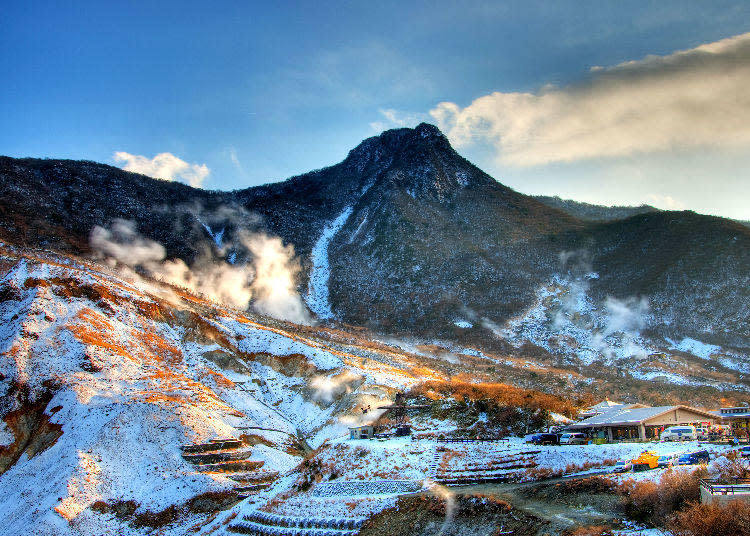
Hell Valley, Owakudani
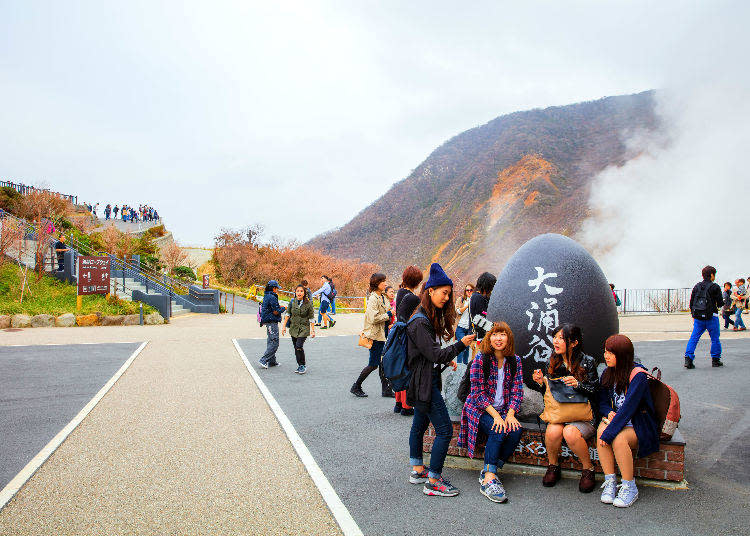
Hell Valley, Owakudani (Yellow Cat / Shutterstock.com)
Next to relaxation is the excitement of active volcanoes that created the crater trail called Owakudani about 3,000 years ago. With steam constantly rising from the area, it has earned the nickname Jigokudani, “Hell Valley.” The local specialty is the black eggs boiled in the hot pools, said to prolong one’s life by 7 years. A calmer spot is Lake Ashi where sightseeing ships cruise across its waters, while the Hakone Ropeway takes you on a 4km-long trip up the mountains. Equally fun is the Hakone Tozan Line, a train snaking its way up at an impossibly steep angle.
Easy Day Trip from Tokyo! Ultimate Sightseeing Guide for Hakone & Lake Ashinoko!
Japanese Hot Spring Experience: Visit Ryuguden and Soak Your Body in Front of Mount Fuji!
5. Izu (Shizuoka): A Sea-and-Mountain Resort Blessed with Mild Climate and Hot Springs


Access from Tokyo: Shinagawa Station to Atami Station (Tokaido Main Line), Atami Station to Ito Station (JR Ito Line)
Duration: ~2 hours
Fare: 4,536 yen
Access from Tokyo (Alternative): Shinagawa Station to Mishima Station (Tokaido Main Line), Mishima Station to Shuzenji Station (Izuhakone Railway Sunzu Line)
Duration: ~2 hours 40 minutes
Fare: 5,560 yen
Must-see spots: Hot springs, Shuzenji, Kawazu Nanadaru Waterfall, Izunokuni Panorama Park
Notes: Izu can roughly be divided into four areas: Higashi-Izu (East), Minami-Izu (South), Nishi-Izu (West), Naka-Izu (Central). The Shuzenji hot springs are in Naka-Izu, while Shirahama Beach and its clear water is in Minami-Izu. It is impossible to see the entire Izu Peninsula in one day, so plan ahead what you would like to visit.

Capybaras enjoying hot spring at Izu Shaboten Zoo (icyyoke / Shutterstock.com)
Izu boasts a mild climate and both beautiful mountains and a stunning beach. On top of that, it is known for its many hot springs and we particularly recommend outdoor hot springs with an ocean view. If you’re visiting the Sagami Bay and Suruga Bay side, don’t miss out on that opportunity!
Izu’s beaches have surprisingly clear water and are popular among divers. Shuzenji is a famous hot spring resort that has been popular with many of Japan’s great minds, such as the authors Natsume Soseki and Ryunosuke Akutagawa. Often called “Izu’s Little Kyoto,” Shuzenji also has a beautiful bamboo grove and autumn scenery and taking a leisurely walk is one of the greatest pleasures of the area. That also goes for other sightseeing spots such as the Kawazu Nanadaru Waterfall and the Izunokuni Panorama Park, offering a 360-degree view that includes Mount Fuji in the distance.
Japan's Cute Capybara: From Tropical Jungle Animals to Bathing Superstars!
6. Atami (Shizuoka): Japan’s Idyllic Hot Spring Resort Area

Access from Tokyo: Shinagawa Station to Atami Station (Tokaido Main Line)
Duration: ~1 hour 30 minutes
Fare: 3,888 yen
Access from Tokyo (Alternative): Shinagawa Station to Atami Station (JR Tokaido Shinkansen “Hikari”)
Duration: ~50 minutes
Fare: 7,340 yen
Must-see spots: Hot springs, foot baths, shopping streets, Nishikigaura, Atami Castle, Hashiriyu
Notes: Most of Atami’s main sights are within walking distance but keep in mind that there are a lot of steep slopes. If you’re tired, feel free to use a taxi or bus.

Resort hotels line up plentifully Atami, one of Japan’s most famous resort areas. Mountain slopes and the sea define this scenic spot, Atami has enjoyed its reputation as a fantastic hot spring area since the Edo period. Walking through the bustling shopping streets and trying the different gourmet delicacies has its own charm as well. After that, relax your feet in the free foot bath Ieyasu-no-yu and enjoy more sightseeing at the scenic cliffs of Nishikigaura, sitting 160 meters above sea level. Atami Castle also lets you savor the area from 360 degrees. With 7,000 tons of hot spring water flowing in Atami every day, thorough Japanese-style relaxation is guaranteed.
Atami 1-Day Itinerary: Exploring Japan's Castle & Hot Springs Resort Town Near Tokyo!
7. Yokohama (Kanagawa): Where East Meets West

Pongchart B / Shutterstock.com
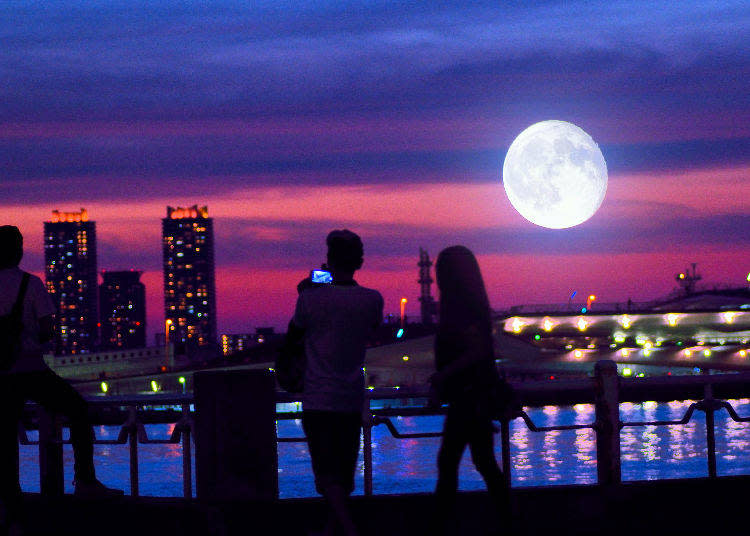
Minatomirai in Yokohama (hubhashish Chakrabarty / Shutterstock.com)
Access from Tokyo: Shibuya Station to Yokohama Station (Tokyu Toyoko Line)
Duration: ~25 minutes
Fare: 534 yen
Must-see spots: Minato Mirai, Yamashita Park, Chinatown
Notes: Half a day is also enough to explore Yokohama, but you should definitely stay until evening to enjoy the beautiful night view. As the city is so close to Tokyo, a lot of people stay at a hotel in Yokohama to enjoy the ocean view.
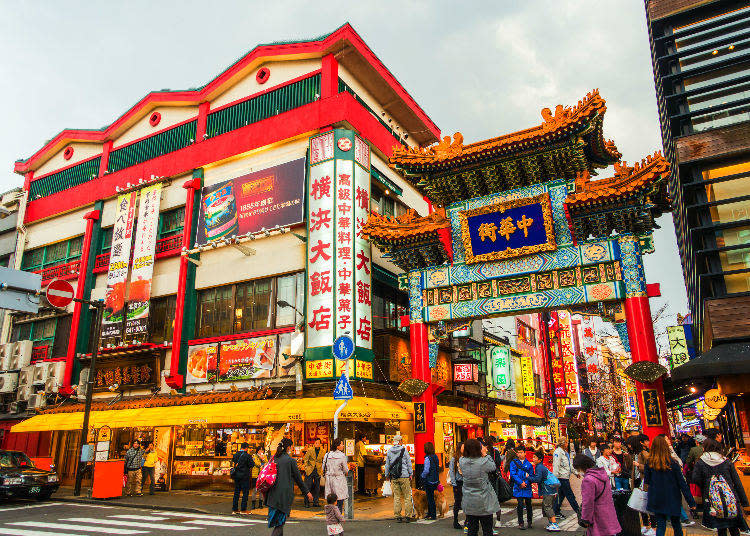
Yokohama Chinatown (Pabkov / Shutterstock.com)
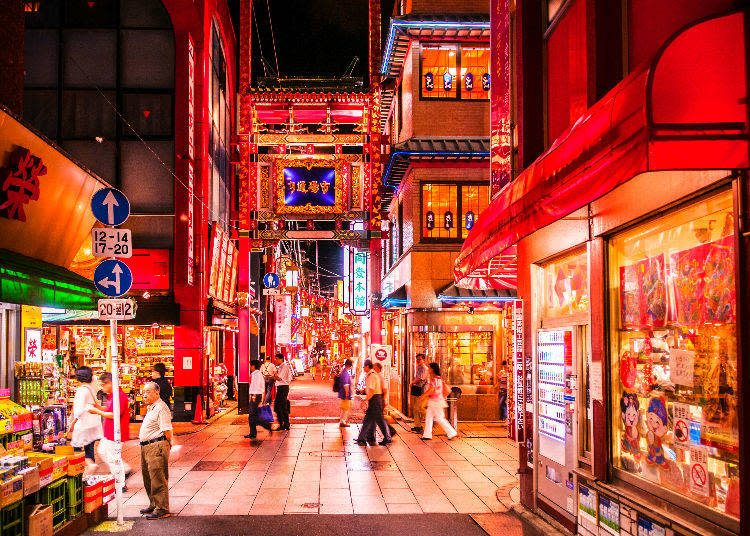
Yokohama Chinatown (PixHound / Shutterstock.com)
Yokohama is known as a romantic city with a kaleidoscope of nostalgic Western-style buildings. It’s a favorite among Japanese people, ranking as the number one city where people would like to live in 2018. Access to Tokyo is also excellent with quick connections to Shinjuku Station, Tokyo Station, Shinjuku Station, and Shinagawa Station, taking no more than 30 minutes. A lot of people working in Tokyo hence live in Yokohama.
It was also one of the first ports opened after centuries of seclusion in 1859, kicking off trade with the rest of the world. That port area is now called Minato Mirai and boasts various sights, such as the Red Brick Warehouse and the Yokohama Landmark Tower. This scenery has caused it to become a popular spot for romantic dates. Yamashita Park is also worth a visit where the ocean liner called Hikawa Maru is anchored. Of course, Yokohama is particularly famous for its Chinatown, dotted with more than 200 Chinese restaurants. We especially recommend exploring the area by sightseeing ship after the sun has set.
Yokohama City Guide: 10 Things You Must Do In Yokohama
8. Mount Takao: Casual Hiking Close to Tokyo
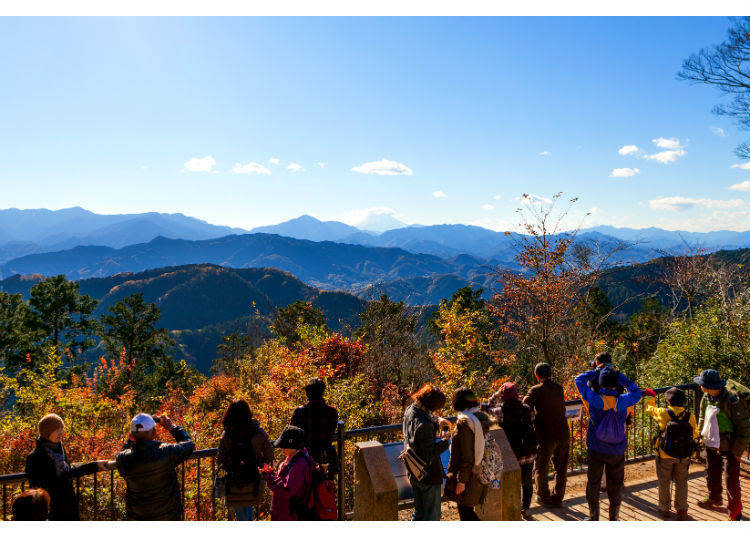
Rpmasse / Shutterstock.com
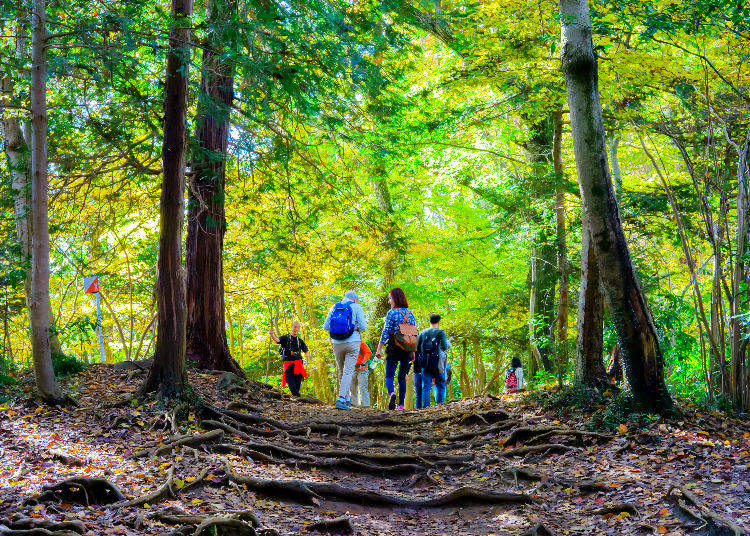
Mmpai / Shutterstock.com
Access from Tokyo: Shinjuku Station to Takaosanguchi Station (Keio Semi Special Express)
Duration: ~1 hour
Fare: 762 yen
Must-see spots: Mount Takao summit, Takaosan Yakuoin Temple, Gokurakuyu hot spring
Notes: Mount Takao is a scenic mountain with fairly easy climbing routes, but we still recommend proper shoes. There are easier and harder climbing routes, so stock up on water, food, a map, and so on. Also, there are no trash cans available, and you are expected to take your trash with you.
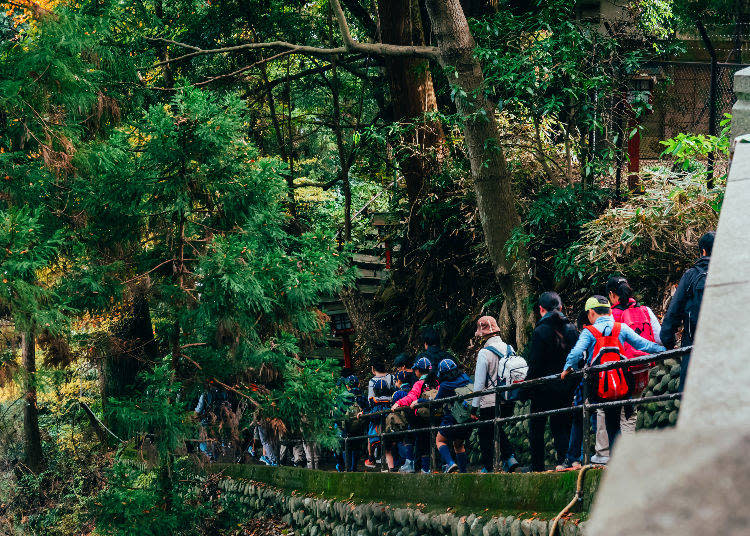
Mmpai / Shutterstock.com
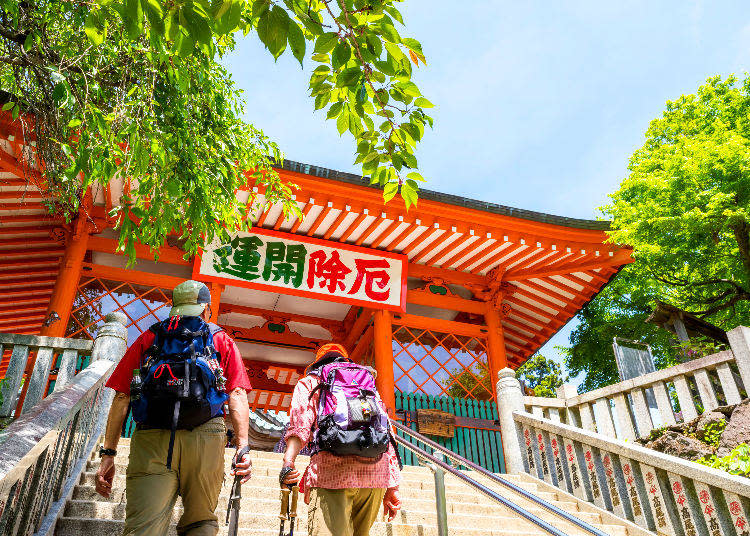
Takaosan Yakuo-in Temple (picture cells / Shutterstock.com)
Mount Takao is 599 meters high and sits right at the border between Tokyo and Kanagawa Prefecture. It’s a popular day trip destination because even casual climbers can easily get to the summit. The Michelin Green Guide awarded Mount Takao with three stars, deeming it a must-visit location. There is both a chairlift and a cable car available, allowing you to reach the summit with less climbing in about 1 to 2 hours. On clear days, you can see as far as Mount Fuji! Meld off any tiredness at the Gokurakuyu hot spring right next to the station after climbing down.
Tokyo Day Trip: Exploring Japan's Old Silk Road Around Mt. Takao
More Than Just Hiking; Sightseeing Around the Base of Mount Takao!
9. Chichibu (Saitama): Lush Nature, Rich History
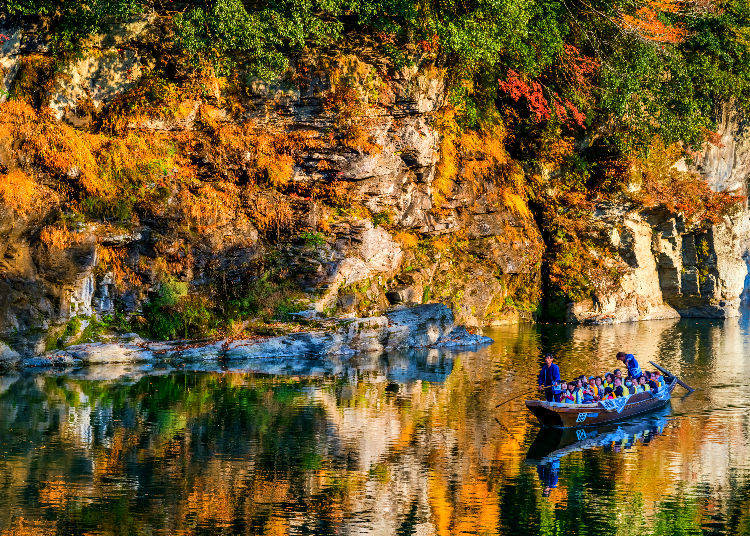
Nagatoro Ravine (picture cells / Shutterstock.com)

Nagatoro Ravine
Access from Tokyo: Ikebukuro Station to Seibu Chichibu Station (Seibu Ikebukuro Line Special Express “Red Arrow”)
Duration: ~1 hour 40 minutes
Fare: 2,944 yen
Must-see spots: Chichibu Sansha Shrine, Chichibu 34 Kannon Sanctuary, Nagatoro line descent, Chichibu Railway SL Paleo Express, Nagatoro Iwadatami Rocks, Hitsujiyama Park and Moss Phlox Hill, Onouchi Valley
Notes: The Nagatoro descent line may be suspended between March and December, depending on the state of the river, and the Chichibu Railway SL Paleo Express generally only runs on weekends with numbered tickets. Check the details of both activities beforehand on the respective official websites (www.nagatoro.gr.jp/en/ and www.chichibu-railway.co.jp/en/)!
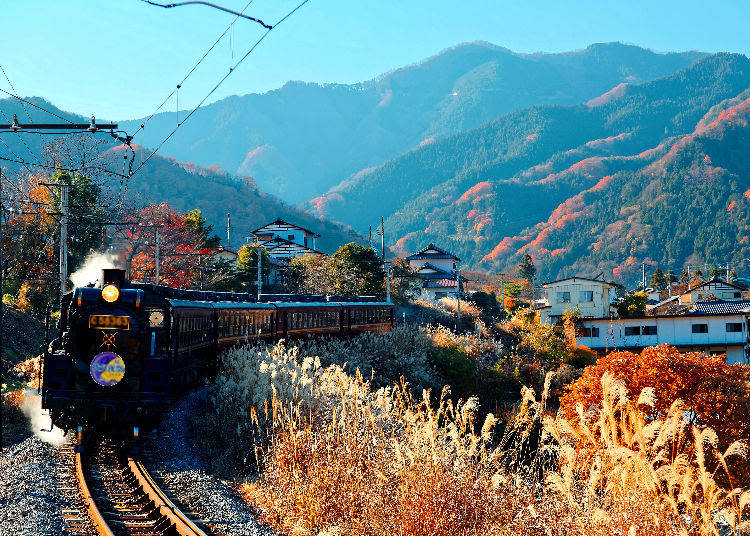
Chichibu Railway SL Paleo Express
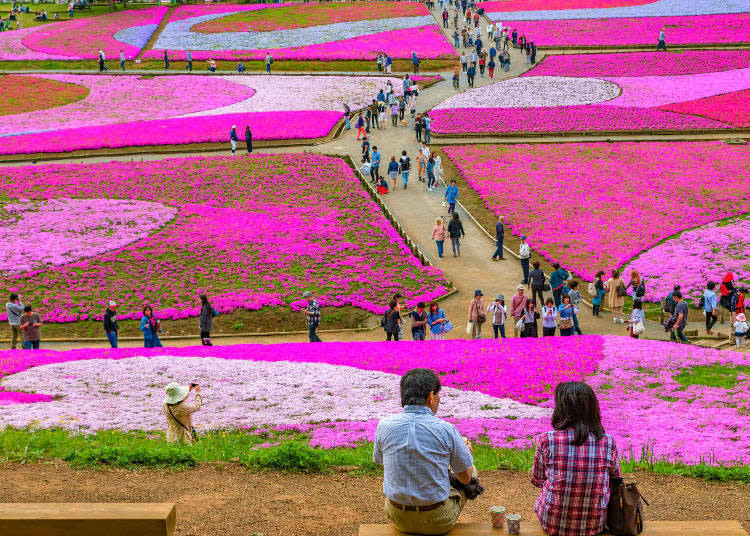
Hitsujiyama Park

Mitsumine Shrine (SenSeHi / Shutterstock.com)
Chichibu is surrounded by mountains and clear streams and doesn’t only boast a plethora of natural spot but plenty of historical sights as well. Especially Chichibu Sansha Shrine, Hodosan Shrine, Chichibu Jinja Shrine, and Mitsumine Shrine are known as “power spots” throughout Japan. A famous pilgrimage called Chichibu 34 Kannon Sanctuary leads parishioners to 34 individual temples, and five of them can be found around Chichibu Station: Jorin-ji, Saiko-ji, Shorin-ji, Imamiyabo, and Jigan-ji.
Riding the nostalgic steam locomotive “Chichibu Railway SL Paleo Express” or the river cruise are exciting activities as well, making for unique travel memories. The Nagatoro Ravine is a masterpiece of nature, as is the Moss Phlox Hill inside Hitsujiyama Park, covered in a stunning carpet of pink and white during spring. The Onouchi Valley will entice you with its mysterious ice creations. Chichibu is also the setting of the anime “Anohana: The Flower We Saw That Day,” so pop culture fans will discover many familiar sights.
Discover Chichibu - Japan’s Photogenic Gourmet Town just a Short Trip from Tokyo!
Shibazakura: Discover Saitama's Moss Pink Hill
Kawagoe (Saitama): Feeling the Spirit of Edo
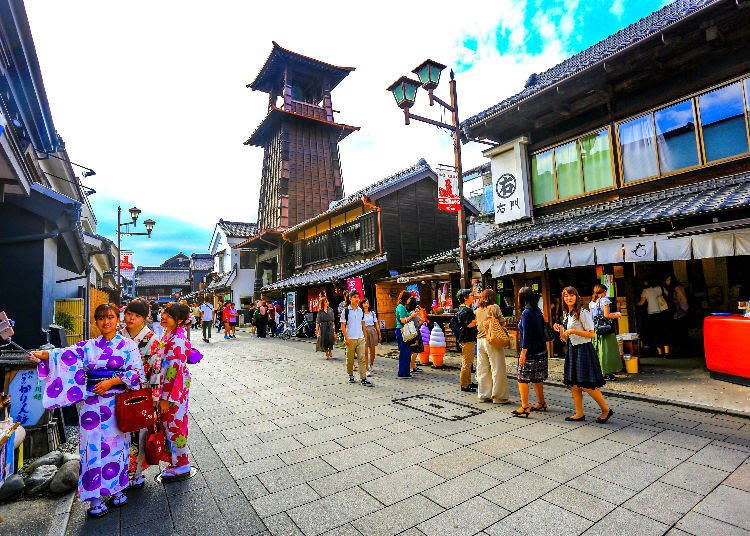
Club4traveler / Shutterstock.com
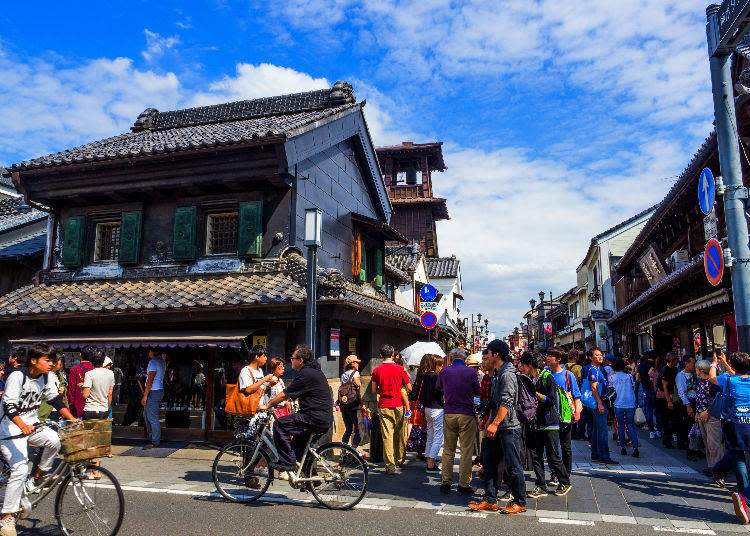
Maneerat Shotiyanpitak / Shutterstock.com
Access from Tokyo: Ikebukuro Station to Kawagoe Station (Tobu Tojo Line)
Duration: ~30 minutes
Fare: 926 yen
Must-see spots: Warehouse District, Toki no Kane, Kashiya Yokocho
Notes: The main street is always crowded and bustling with tourists, but it is still a regular road with cars and buses. Traffic is plentiful and the sidewalks are narrow, so make sure to stay safe while strolling.

Kasama S / Shutterstock.com
Kawagoe has first prospered as a castle town since about 1653 in the Edo period, then further became famous as a hot spot for trade and merchants. Its scenery of historical warehouses lining up next to each other is known throughout Japan. This warehouse district, also called Ichibangai, will make you feel like you’ve fallen through a crack in time. Particularly noteworthy is Toki no Kane, an old clock tower that has become the symbol of Kawagoe. The entire area has been designated as an important preservation district of historic buildings.
There’s also a street filled with nostalgic sweet shops called Kashiya Yokocho, stretching on for 80 meters and tickling your taste buds with traditional desserts and snacks. We especially recommend enjoying historical Kawagoe by renting a kimono and touring the area with a rickshaw.
Kawagoe: Explore “Little Edo” in Kimono!
Have a Coffee at the “Traditional Japan”-Style Starbucks in Kawagoe!
written by yoko


